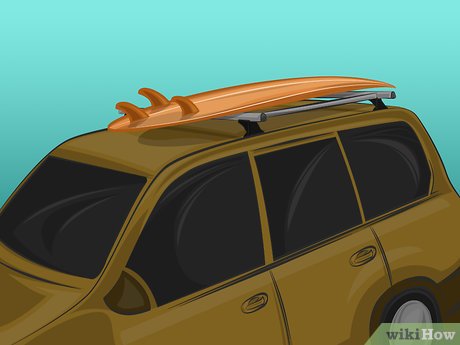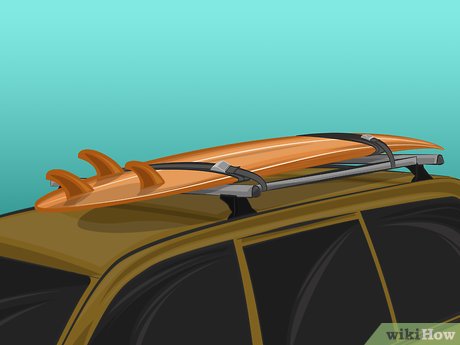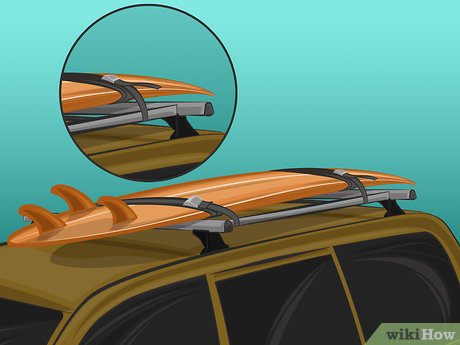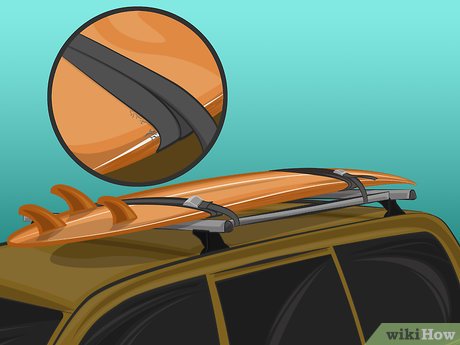A surfboard on the roof of a car can act like the wing of an airplane. G-force, lift and drag all come into play. A board flying off a vehicle can become a deadly missile.
Steps
1Securely attach racks to the vehicle. If the racks are so-called “soft racks,” they should consist of more than just a web strap that wraps around the vehicle.X
2Straps that wrap around the rack and surfboard must be inspected for worn or weak spots. Buckles on the straps should be the cam-spring type and not d-ring style. No-Rust zinc buckles are preferred.
3Place the surfboard with the fin(s) up and forward on the rack. This reduces “lift” and the surfboard fins will act as a “stop” to prevent the board from sliding backwards off the rack.X
4Wrap the straps through the side-rails (around the cross-bars) of the rack and over the top of the surfboard(s) then around the cross-bars on the other side. Make sure the strap buckle is not on the rail of the surfboard. Each strap should cross the board twice. Repeat for other cross-bar.X
5Give the board a solid “shake” to make sure the board will not shift in the rack.X
6Always tie-off excess strap. Never let it flap in the wind.
7Be careful not to over-tighten straps as this can damage surfboards.X








